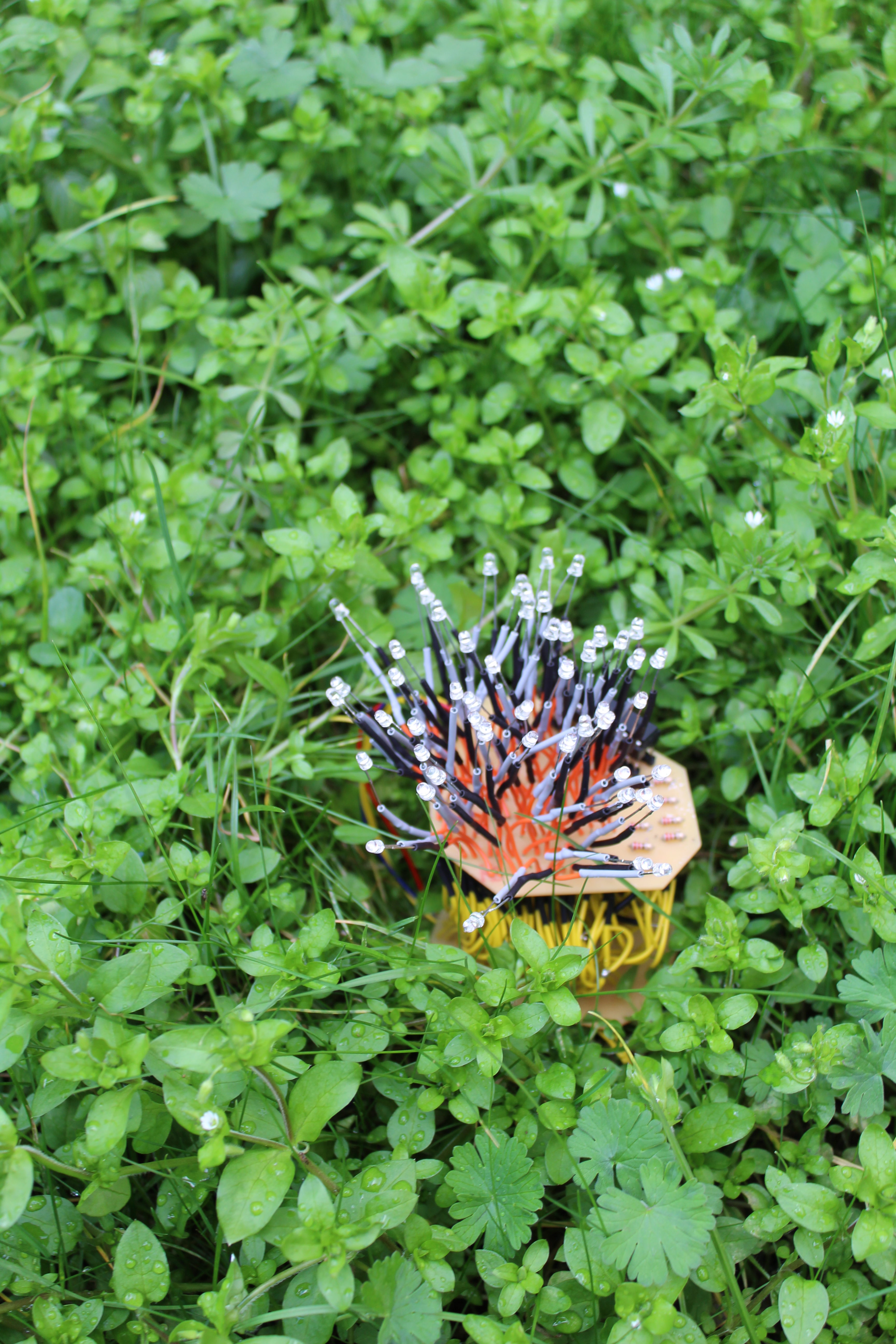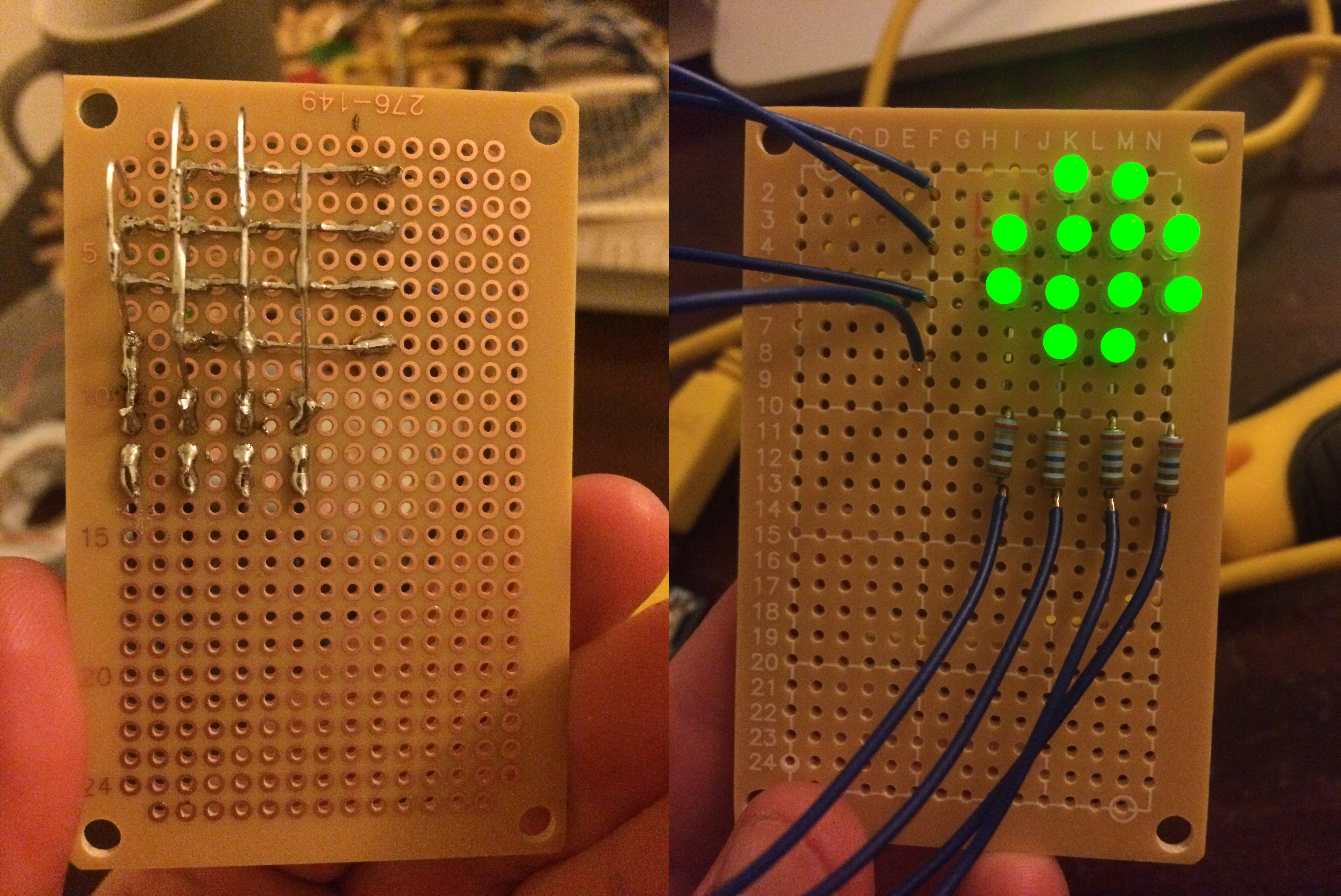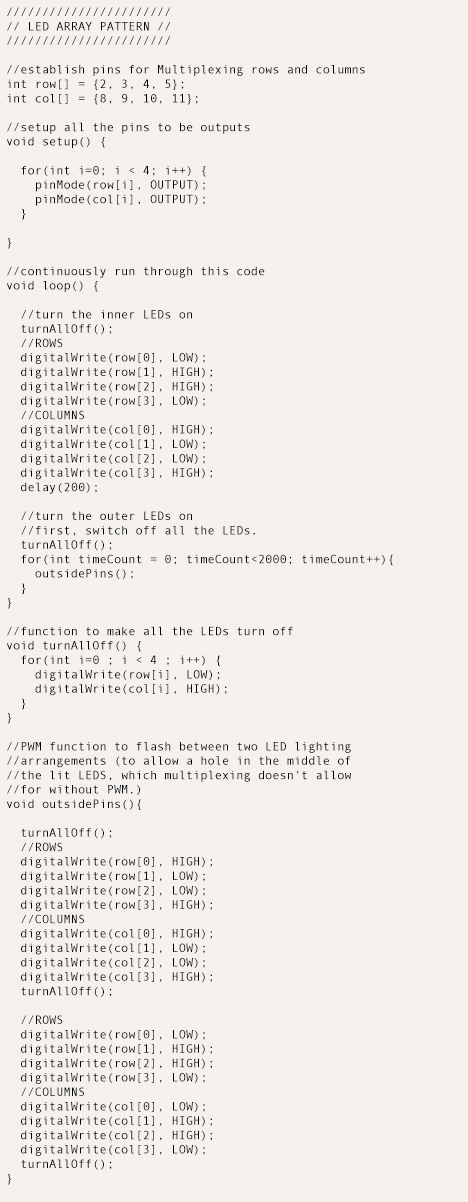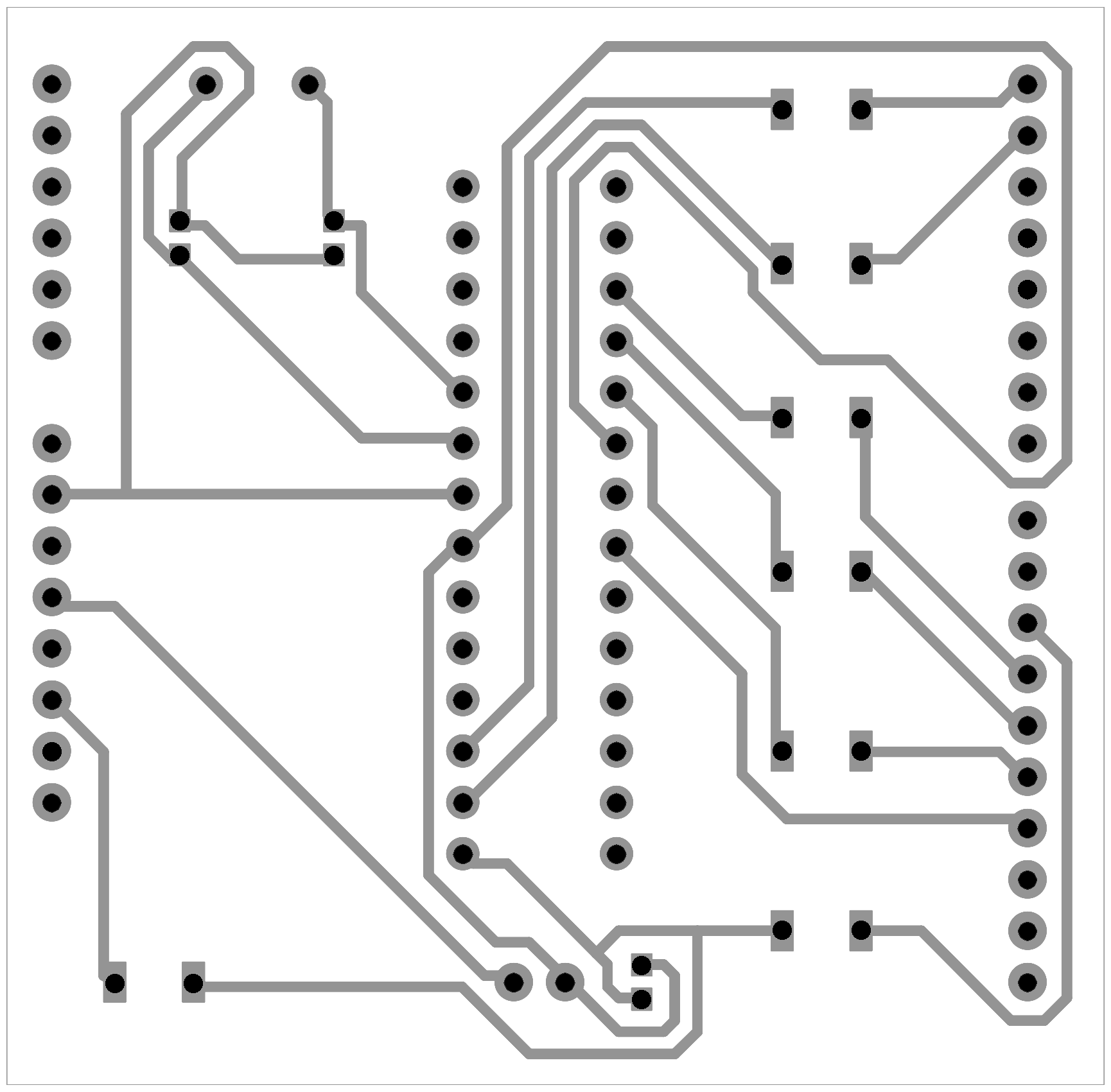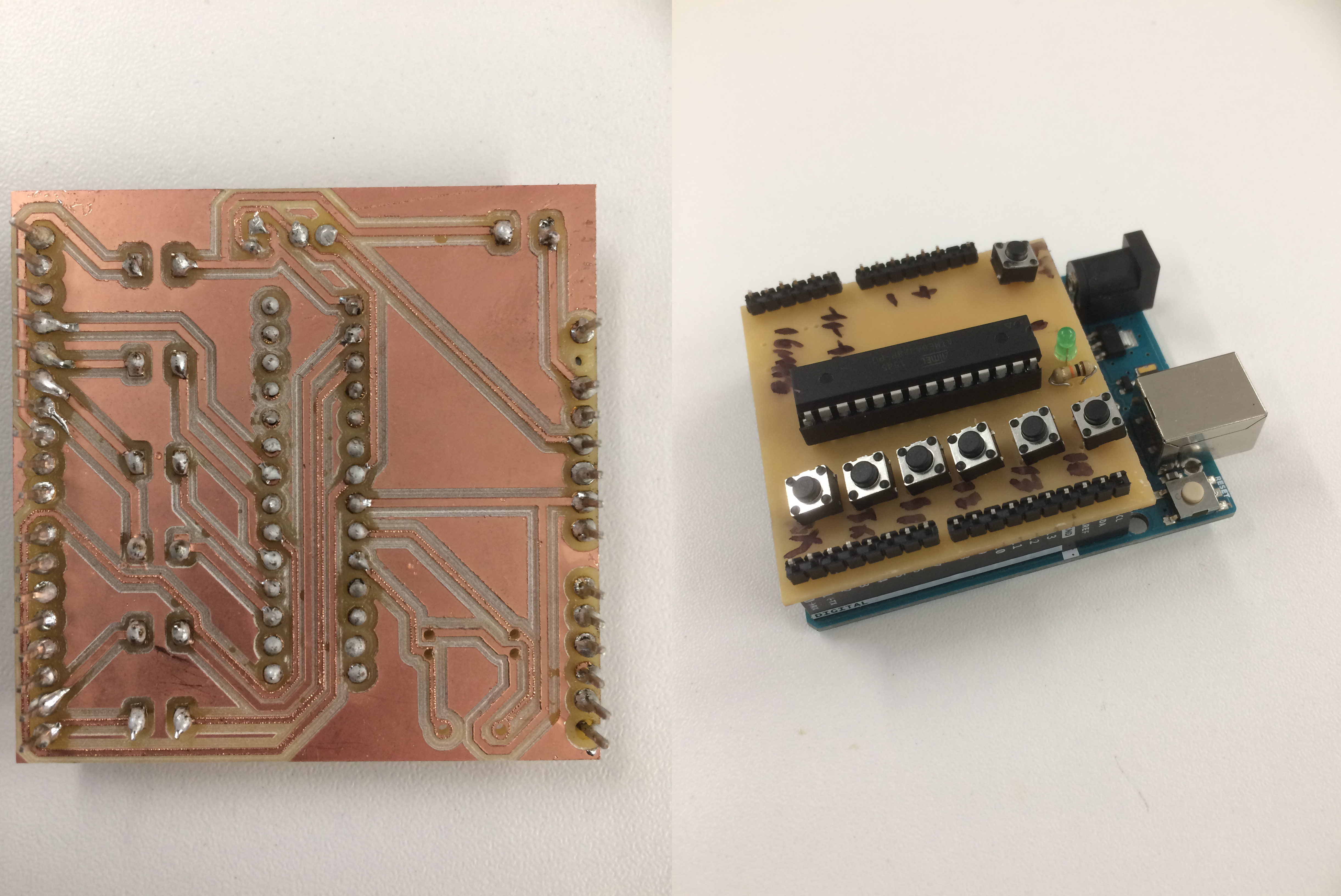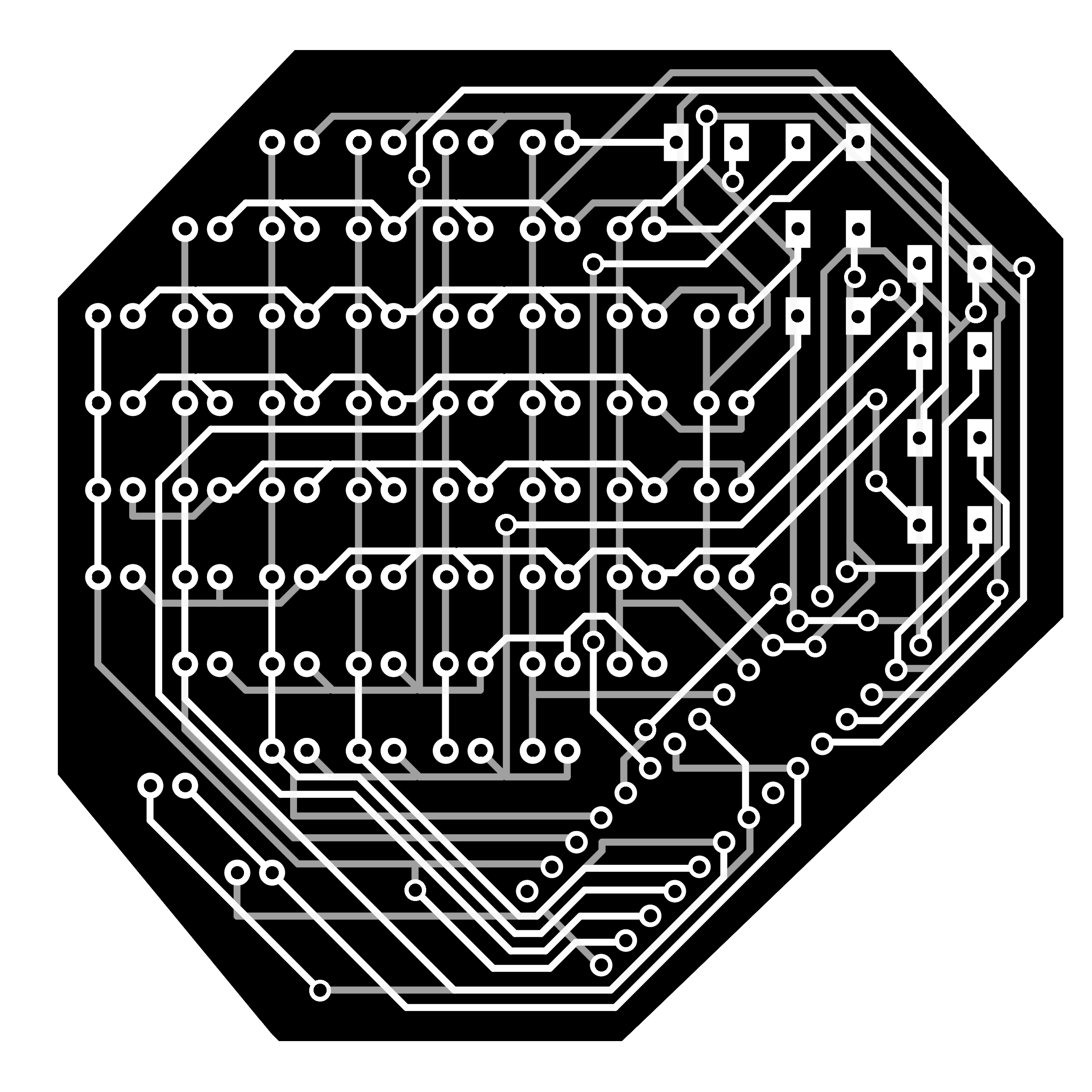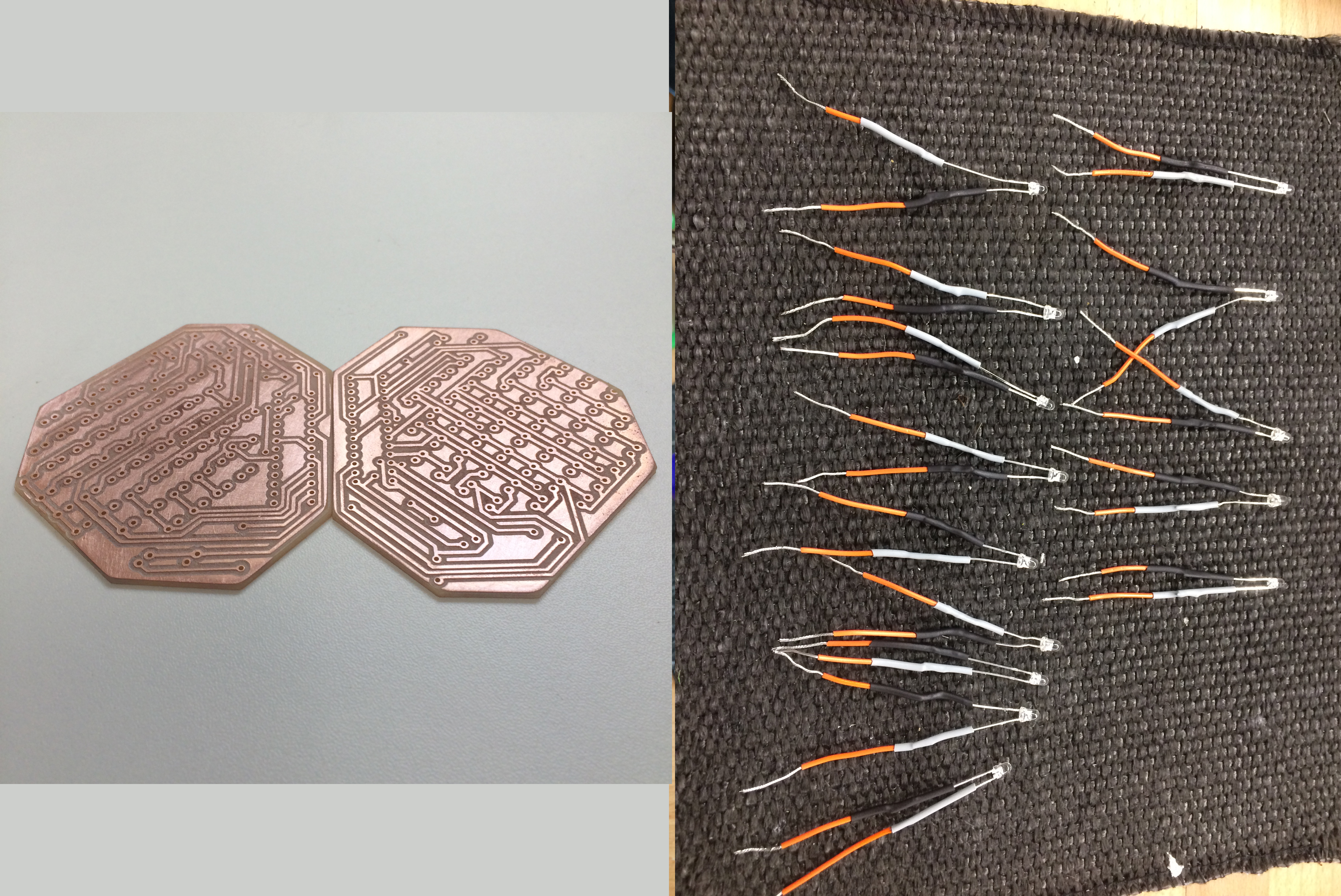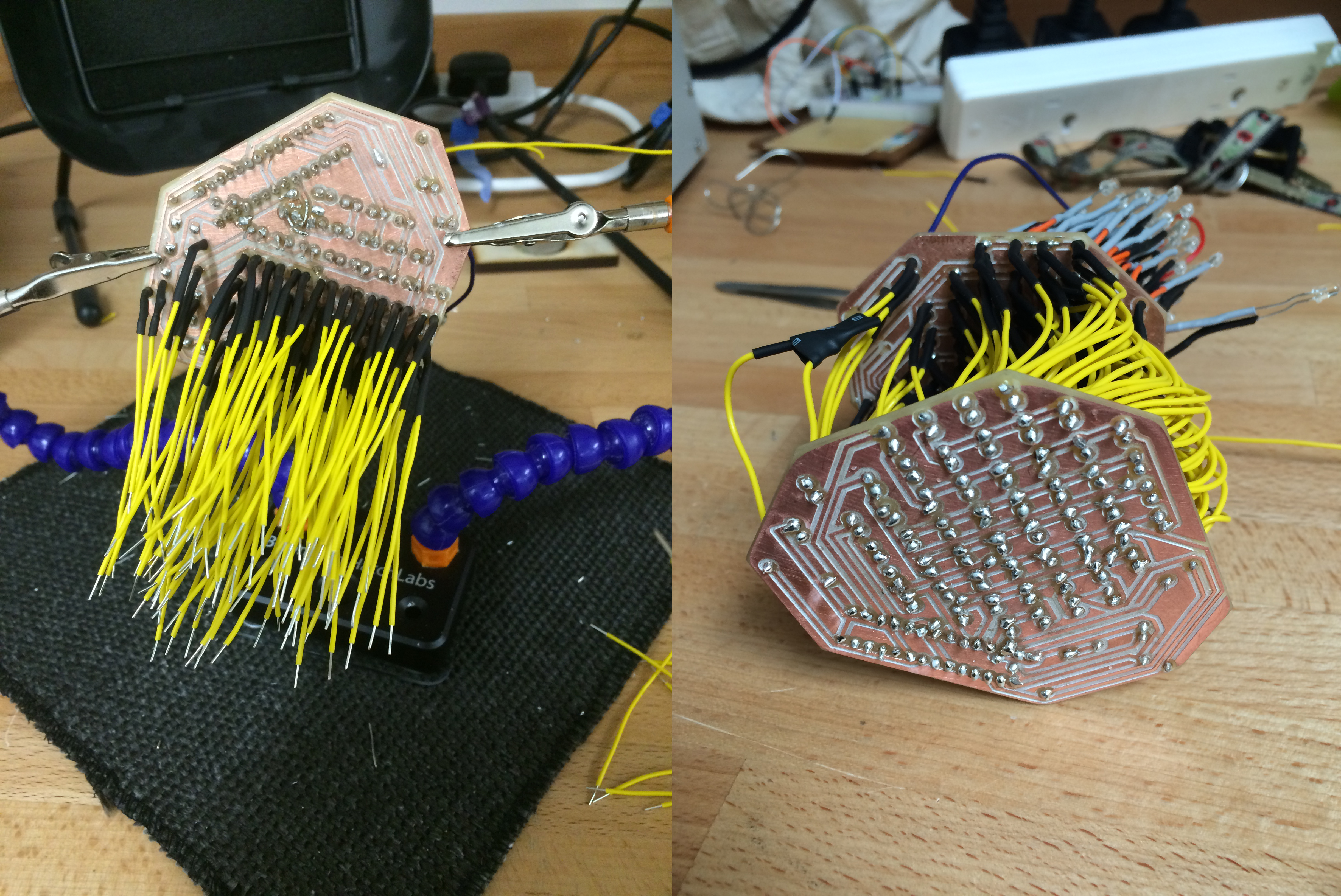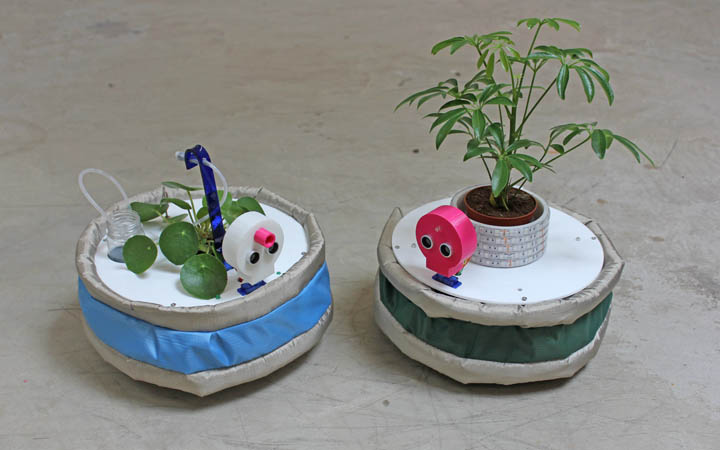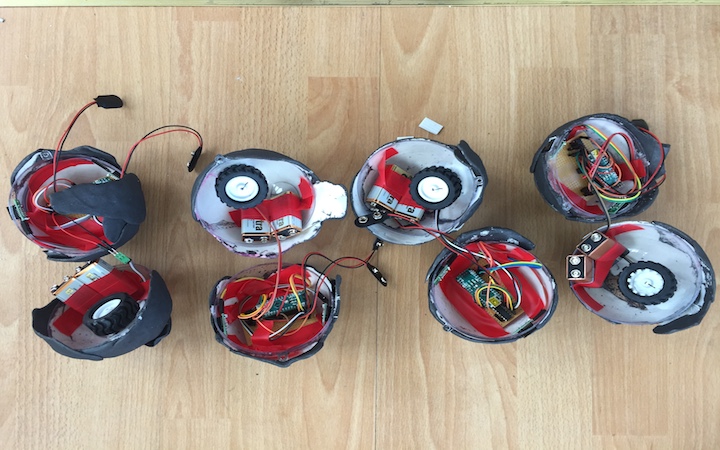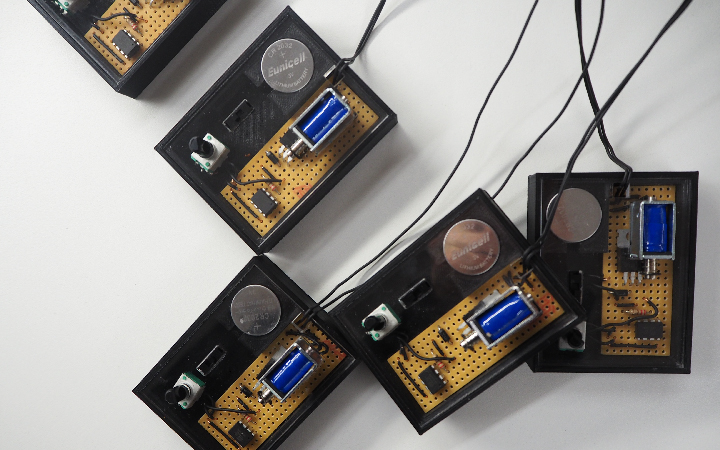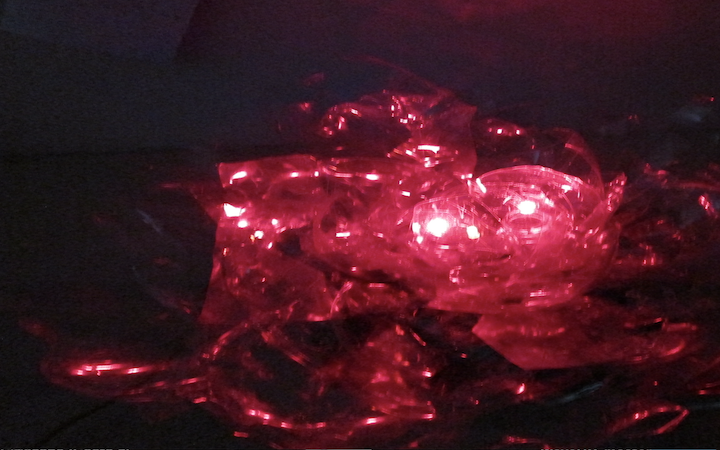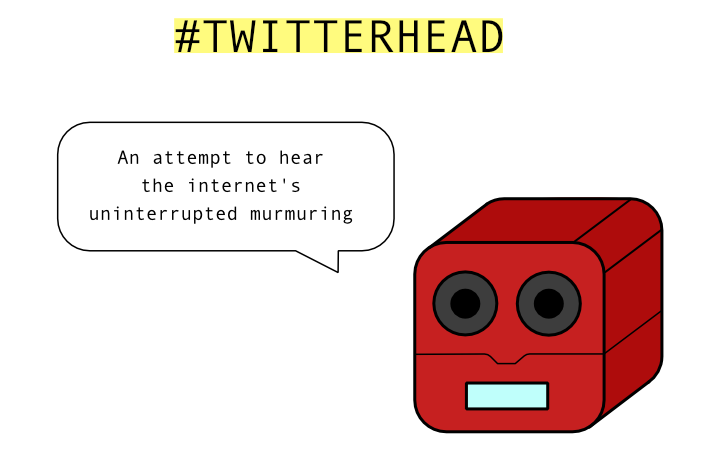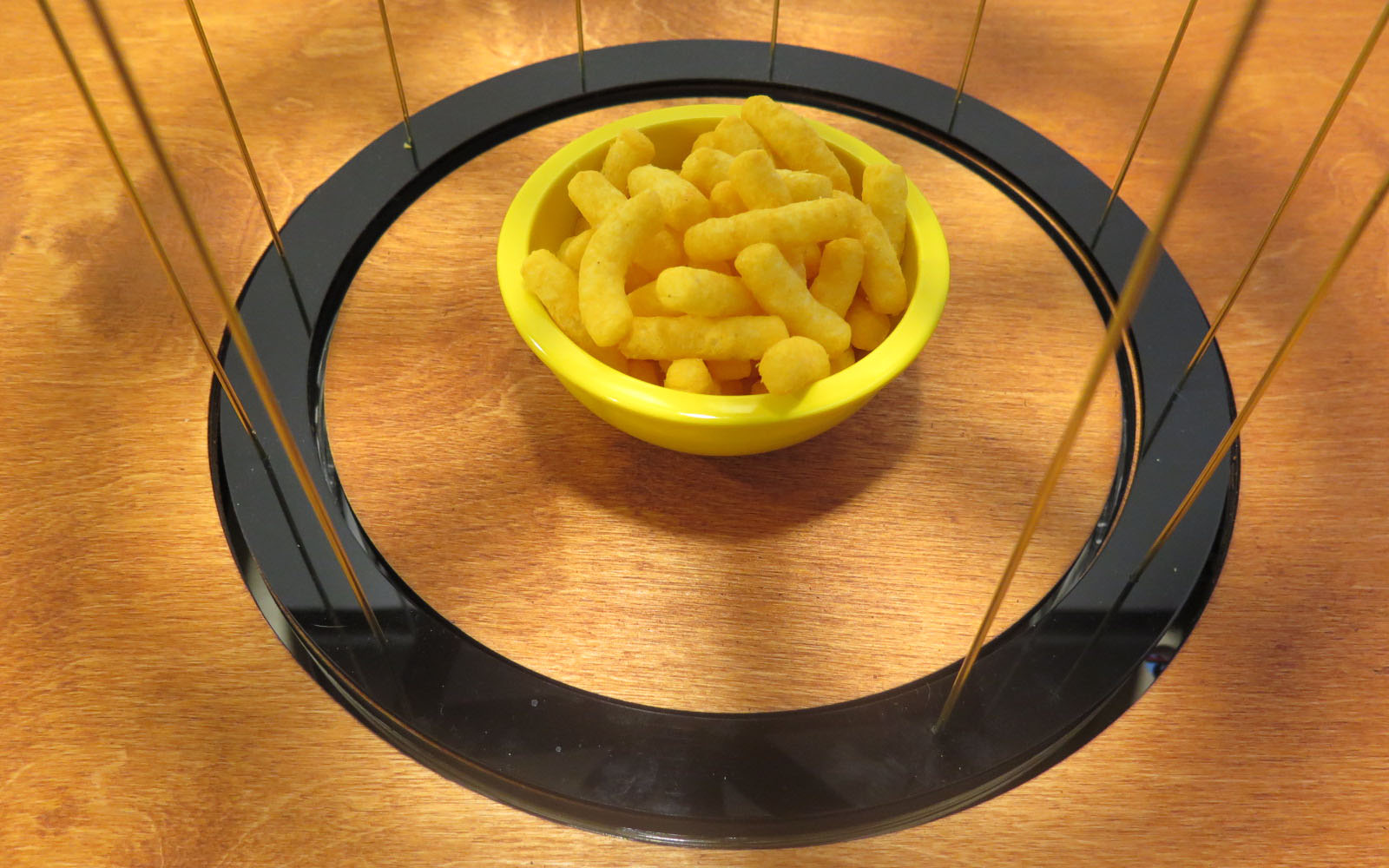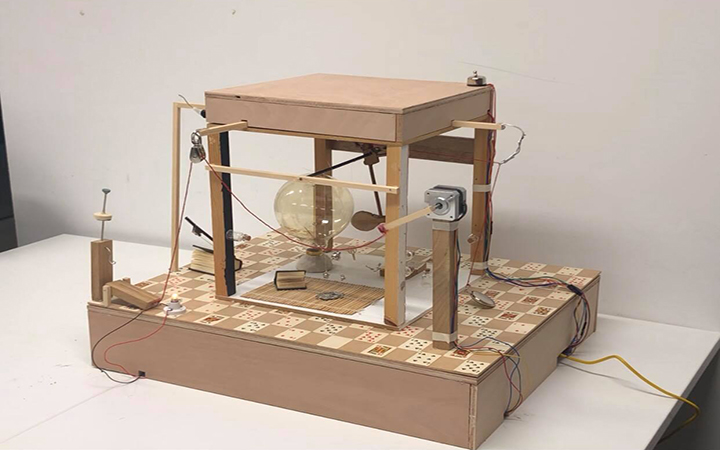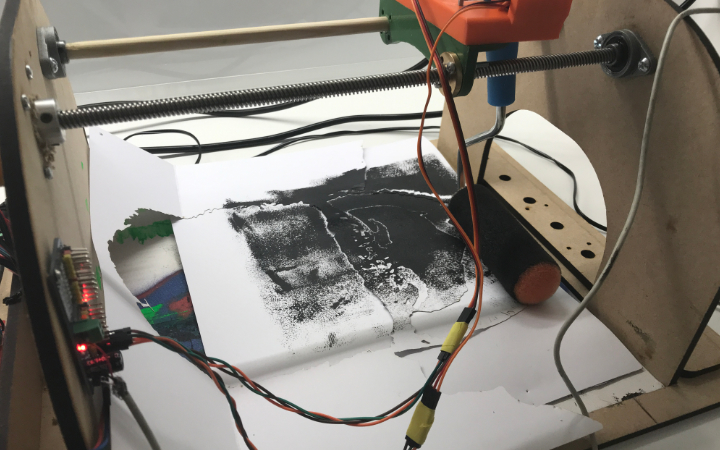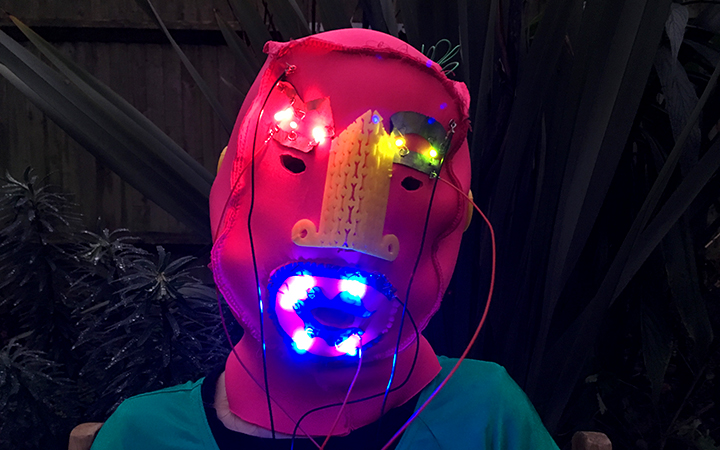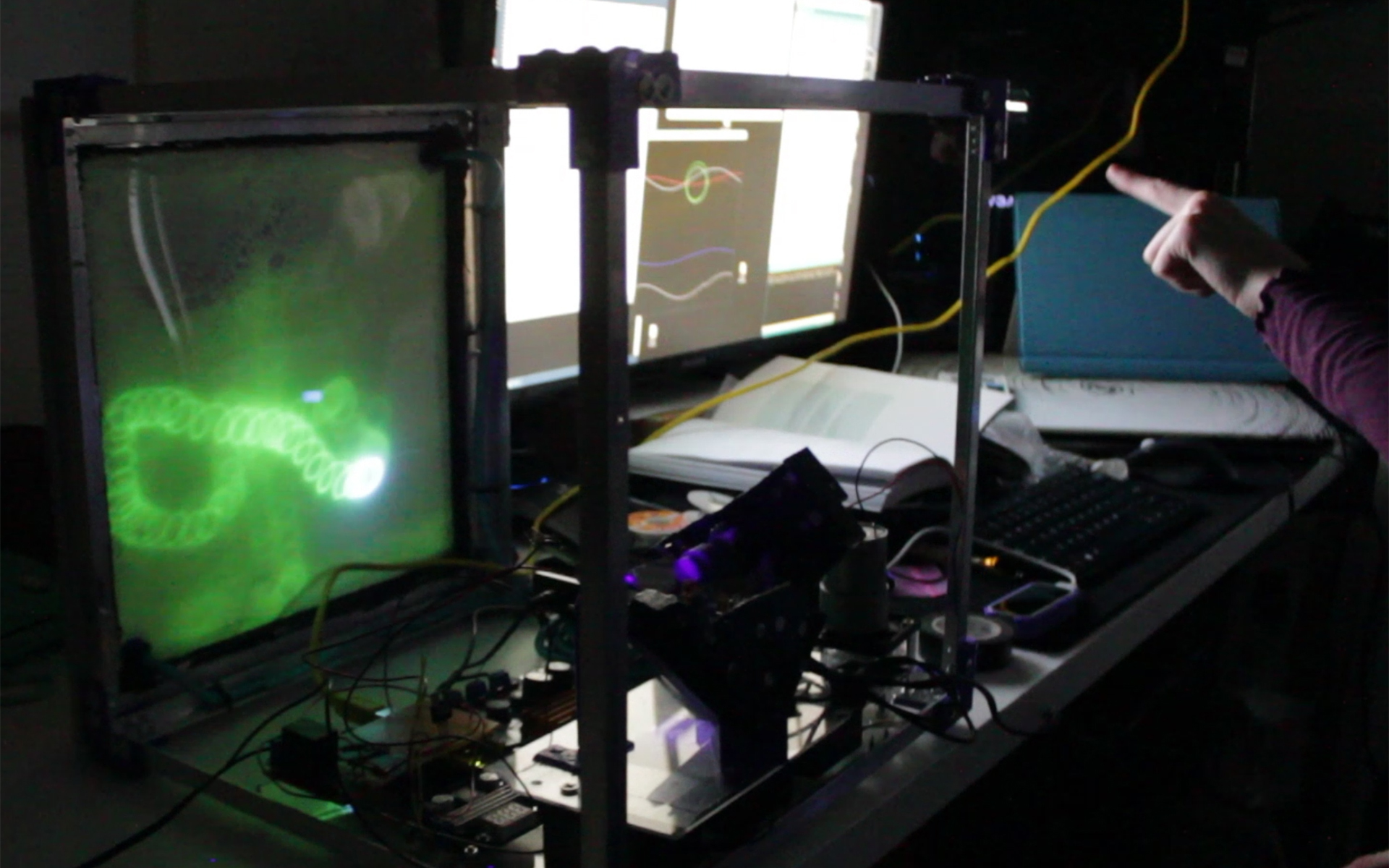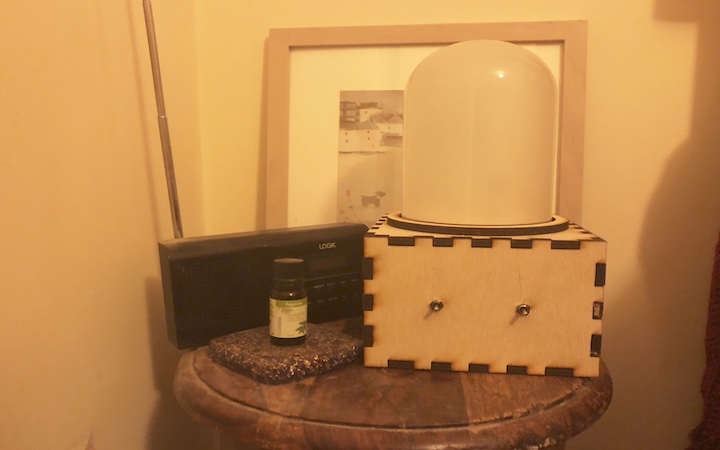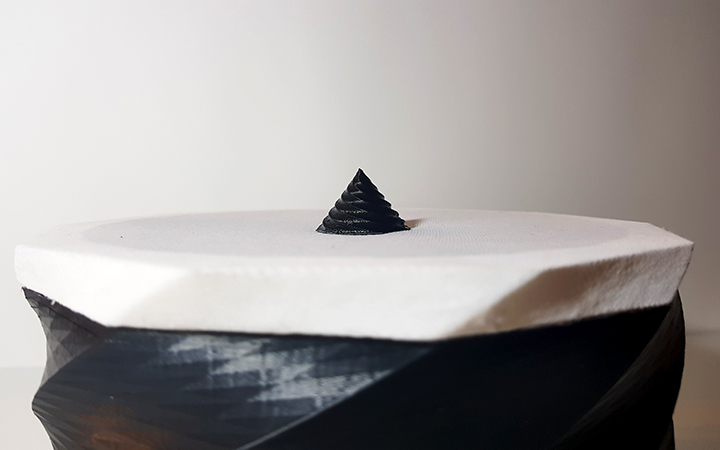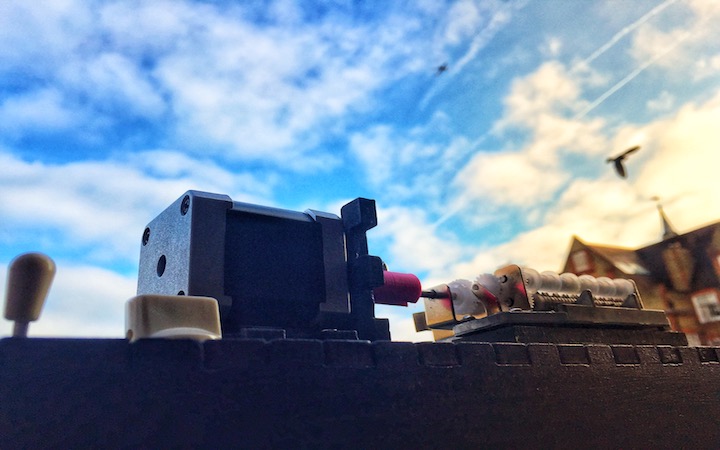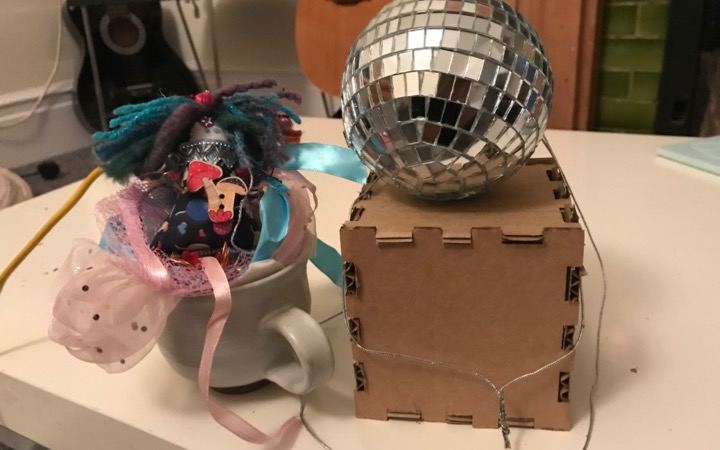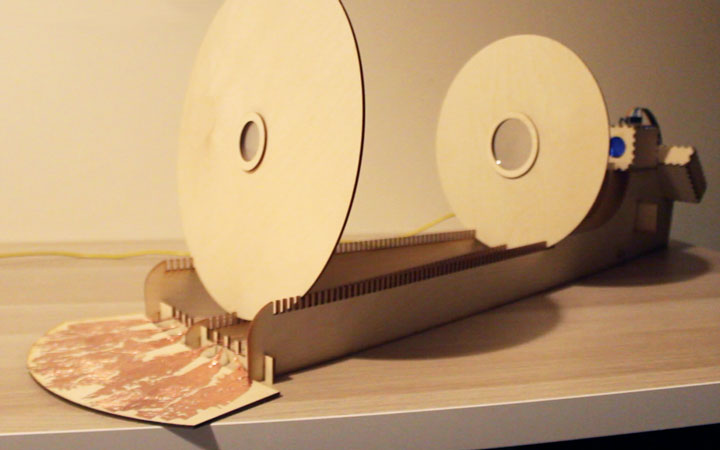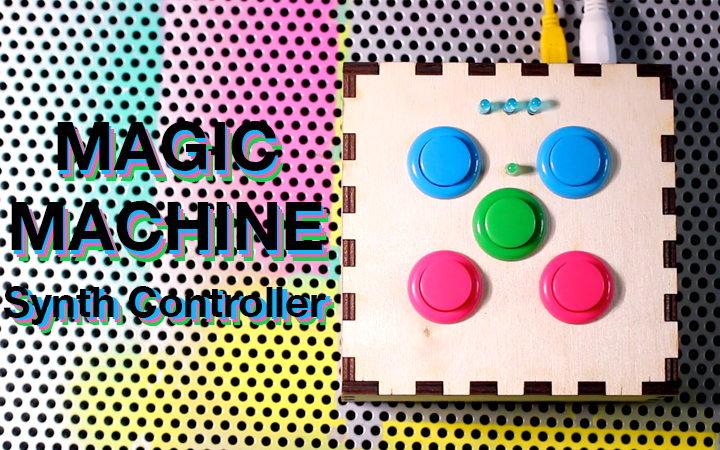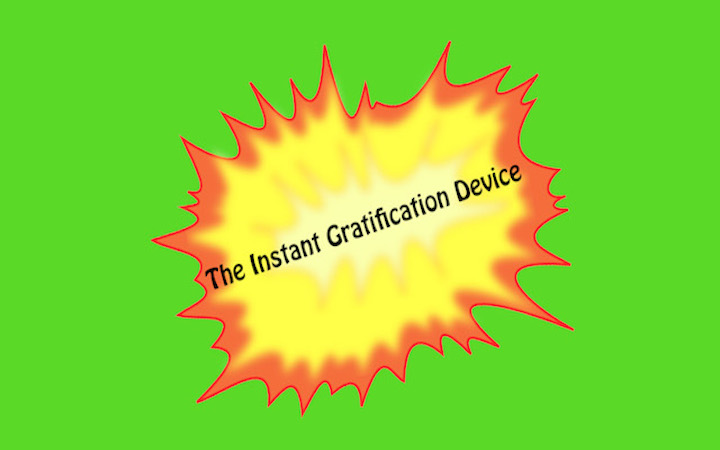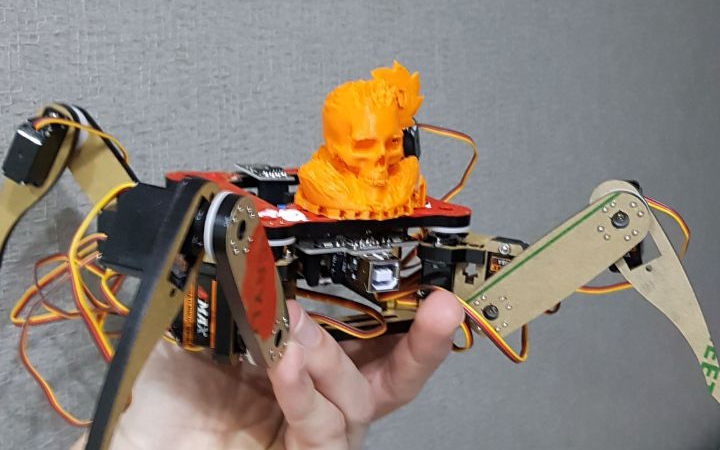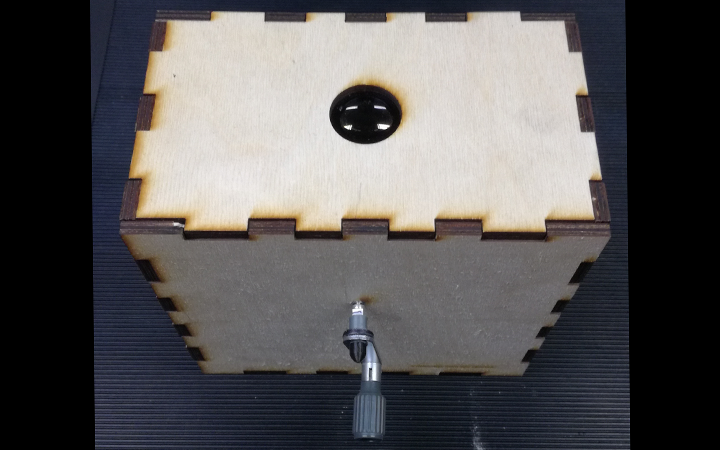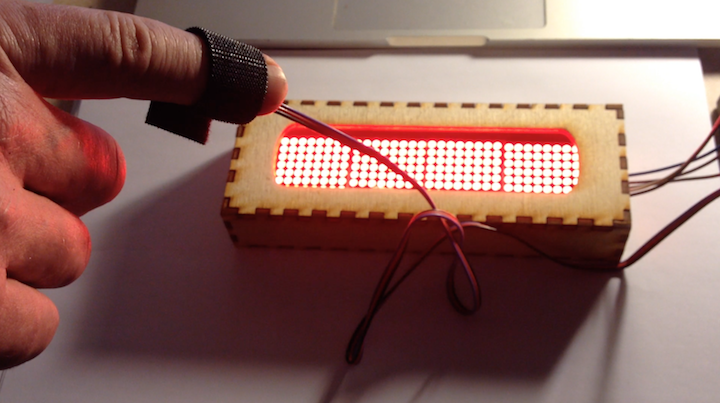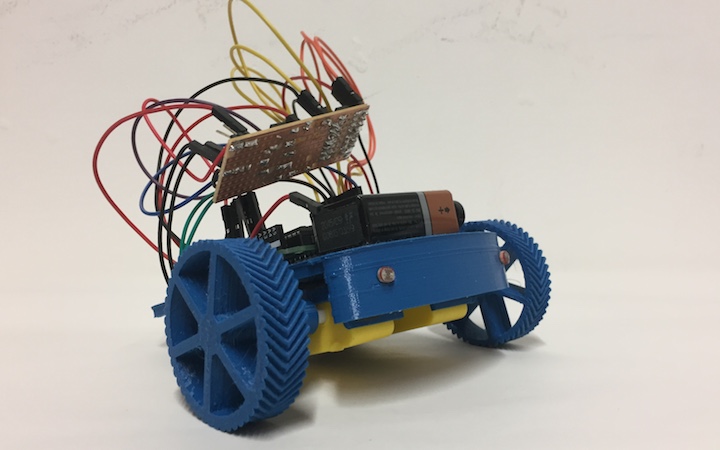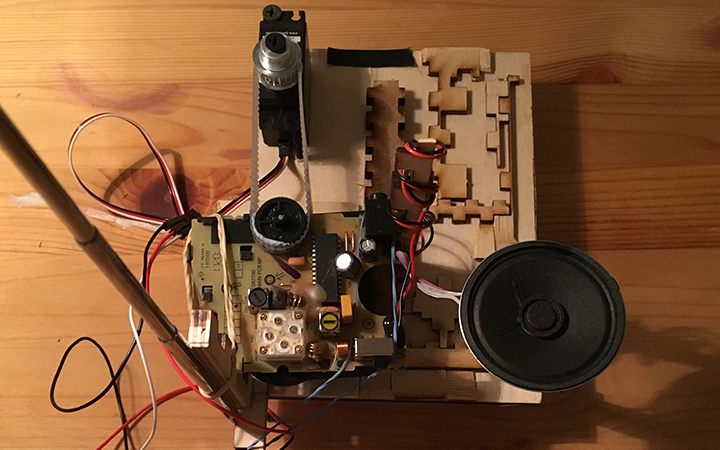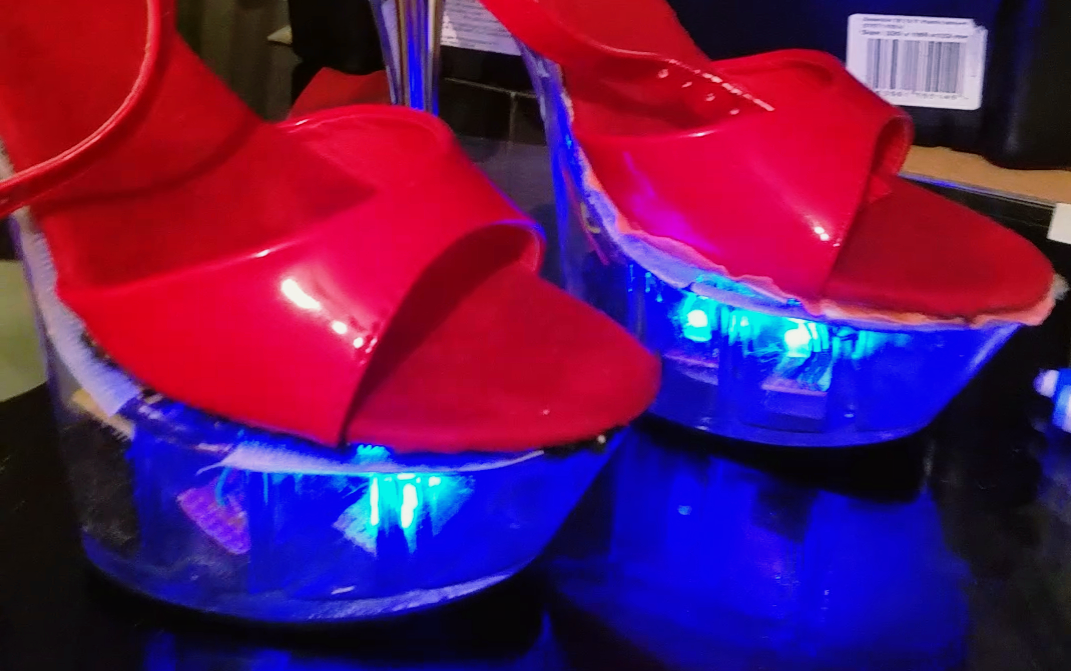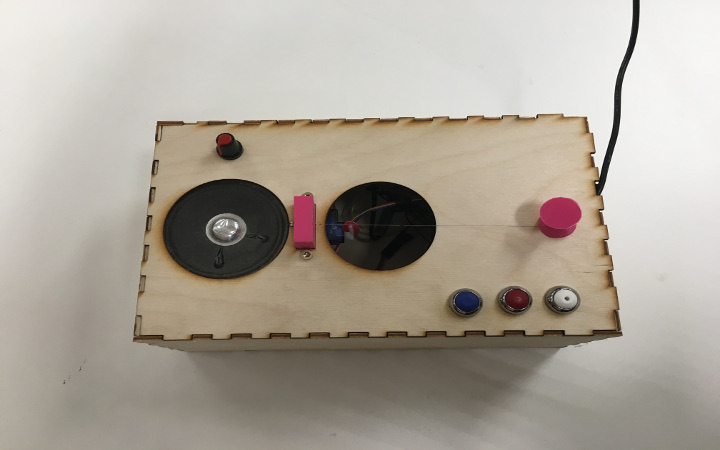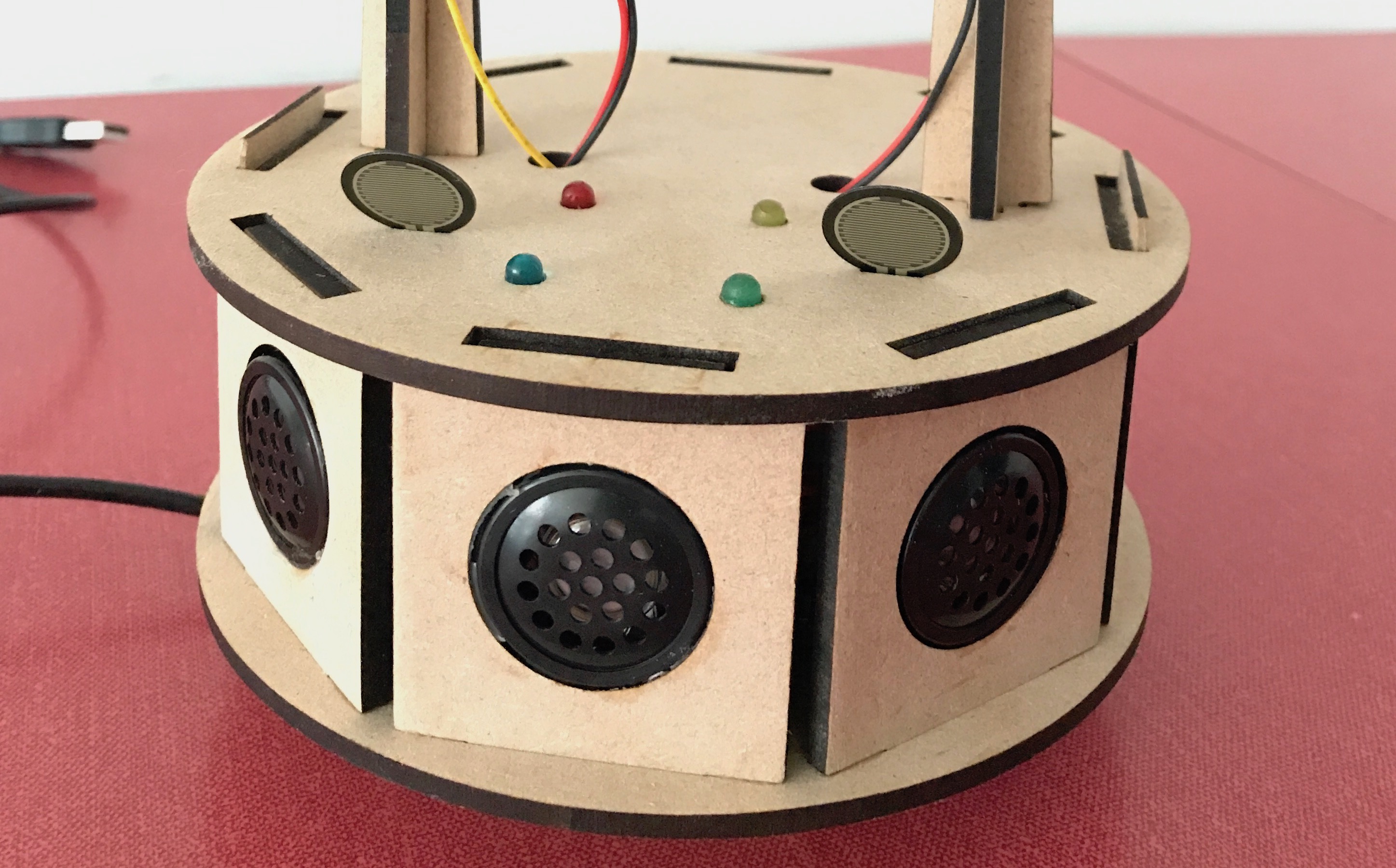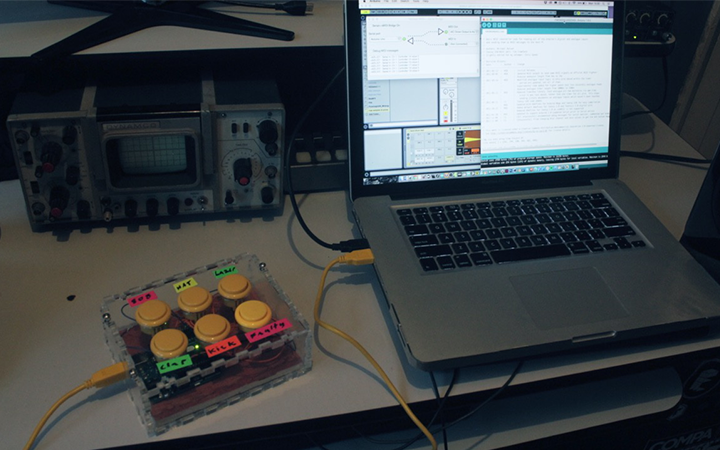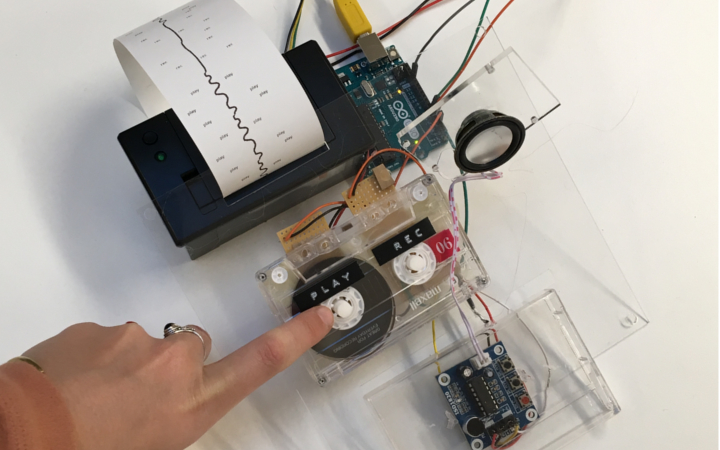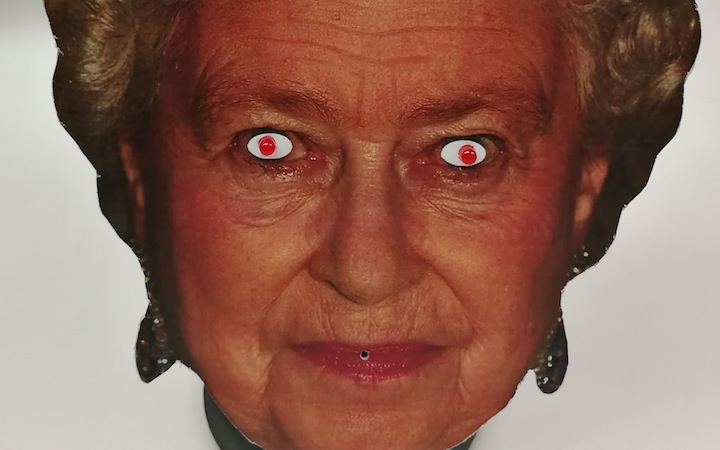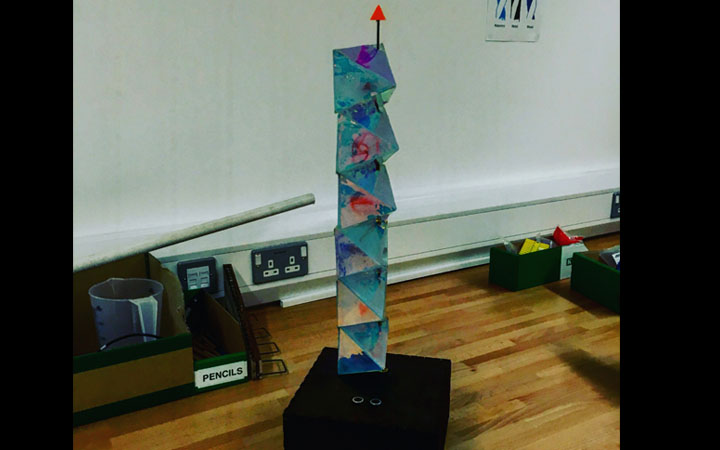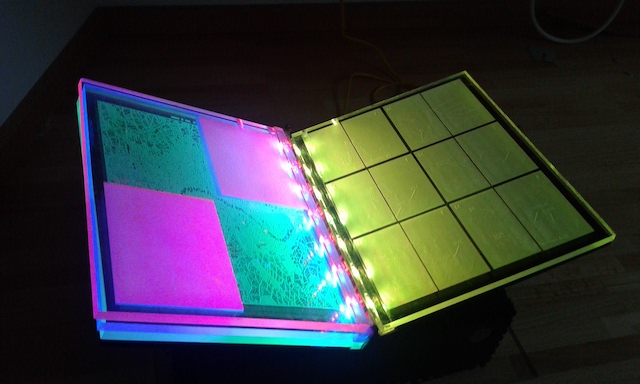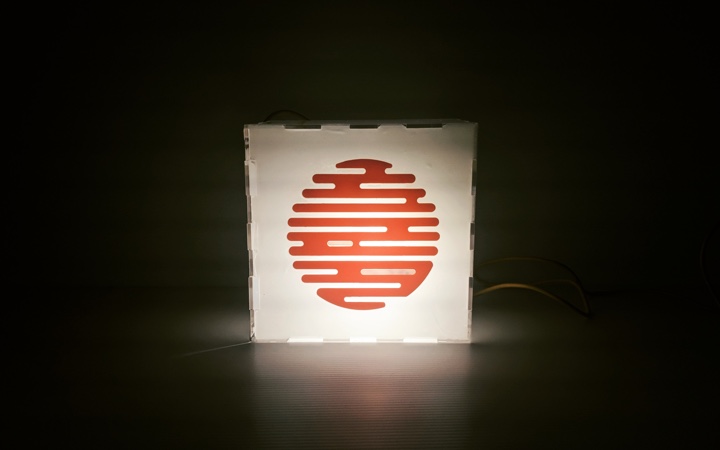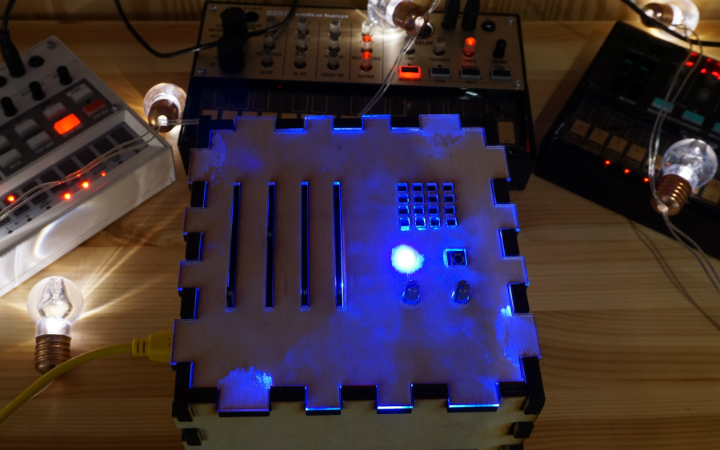Digital Moss Symbiote
Megan Bates
The digital moss symbiont is a multiplexing LED array off 555nm LEDs, the most vibrant colour wavelength to the human eye.
The MVP was a smaller multiplex on perfboard. The first MVP attempt was badly spaced and it was impossible to keep soldered joins separate. The second attempt was better spaced, with fewer LEDs, and worked correctly.
To test the multiplexing ability of the small LED matrix, I used some code to flash the inside and outside LEDs. To do this for the outer LEDs, I had to execute code which would flash rapidly back and forth between two states, so persistence of vision would make it look as though only the outer pins were on.
The final LED multiplex would require more pins than an ATtiny could provide, so I designed an ATmega shield to sit on top of the Arduino.
The components were placed in Eagle, and I then used autotracer to find a trace without any overlaps with the widest spacing between traces to create the safest possible connections. I cut the board on the PCB mill and soldered components in place.
The shield fit perfectly on top of the Arduino, but unfortunately programming an ATmega proved much more difficult than programming an ATtiny: it turns out it often needs additional backup power supply, and completely perfect and consistent pin connections, which switches got in the way of. I managed to program an ATmega on a breadboard instead, to run a minimum scale 2 by 2 LED multiplex:
I then designed the PCB design for the final 8 by 8 LED multiplex on Eagle:
This went through several design iterations: I even cut a board which would not work at one point, as pin allocations to the ATmega were incorrect:
The ATmega has different pin numbers in the Arduino IDE to its hardware, and some have to be allocated to power supply, resetting etc. The updated PCB design has reallocated pins, power supply pins, bigger solder points for resistors and pins for an external switch to reset the Game of Life program on the ATmega. LEDs were extended with soldered wires, using shrink-wrap to keep connections from short circuiting.
Components were then soldered into the PCB.
The second layer of the PCB could not be attached directly onto the first, the wires could not be led through. I decided to extend the wires from the first layer so that they could be attached to the second layer row at a time.
There were a lot of difficulty in soldering components to the second layer- moving the wires to make the right connections meant some soldering was disconnected from the PCB. Many links had to be fixed by stripping back wire and reconnecting with solder and shrink-wrap.
The final Digital Moss Symbiote plays the game of life through connections to Arduino, but will have to be adapted and rebuilt to run off the ATMega.
The reset button doesn’t seem to be working correctly, and no lights will switch on if both sets of positive and negative pins on the ATMega are connected.
A further version of the DMS will run without Arduino, and eventually have a truly symbiotic relationship with moss or another plant.
Our intimate relationship with plants has affected our biology, their most reflective colours imprinted in our DNA to be favourably differentiable. The symbiont plays the game of life across its 555nm LEDs, a computer program which has inspired many projects exploring and creating digital life forms. Its organic motion is dictated by a series of simple rules which eventually settle into a lethargic equilibrium. Frequent stimulation is required for the symbiont to have an energetic life, applied by the moss or human with which it has its symbiotic relationship. The increased light levels it emits help sustain its partner so that together they can create a cooperative equilibrium.
I created a 3D printed shell to house the D.M.S., which was intended to be covered with moss. I decided that the circuitry was biological looking without the need for the biological decoration. However, I would like to try developing this idea further of combining digital and biological lifeforms.
Physical Computing Projects
term 1, 2017-18 cohort
































































